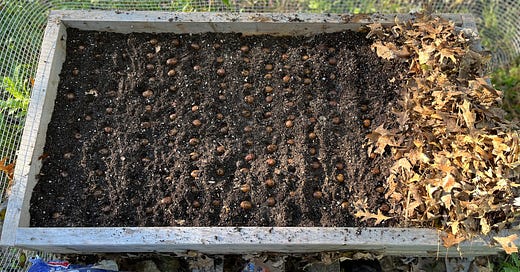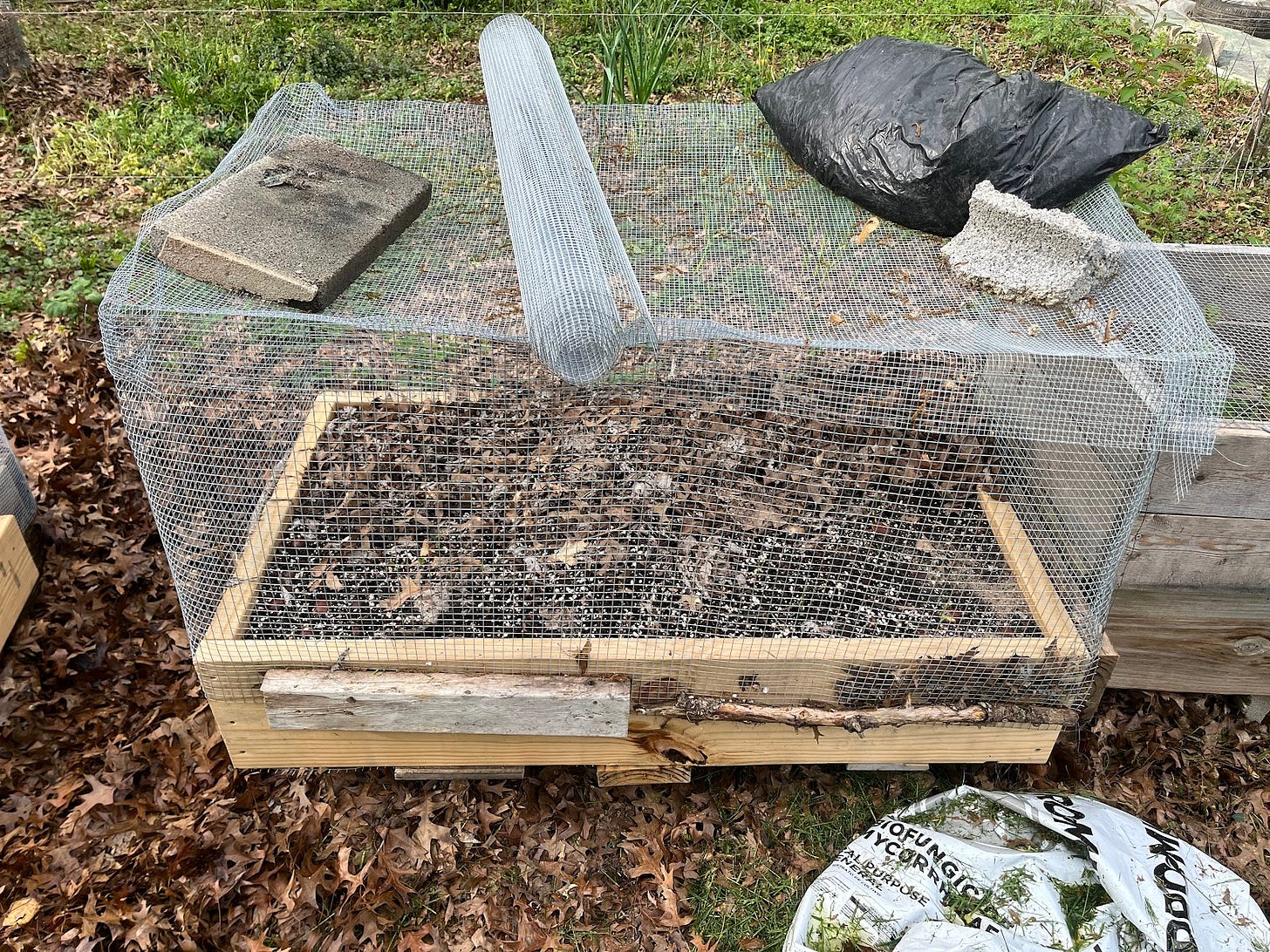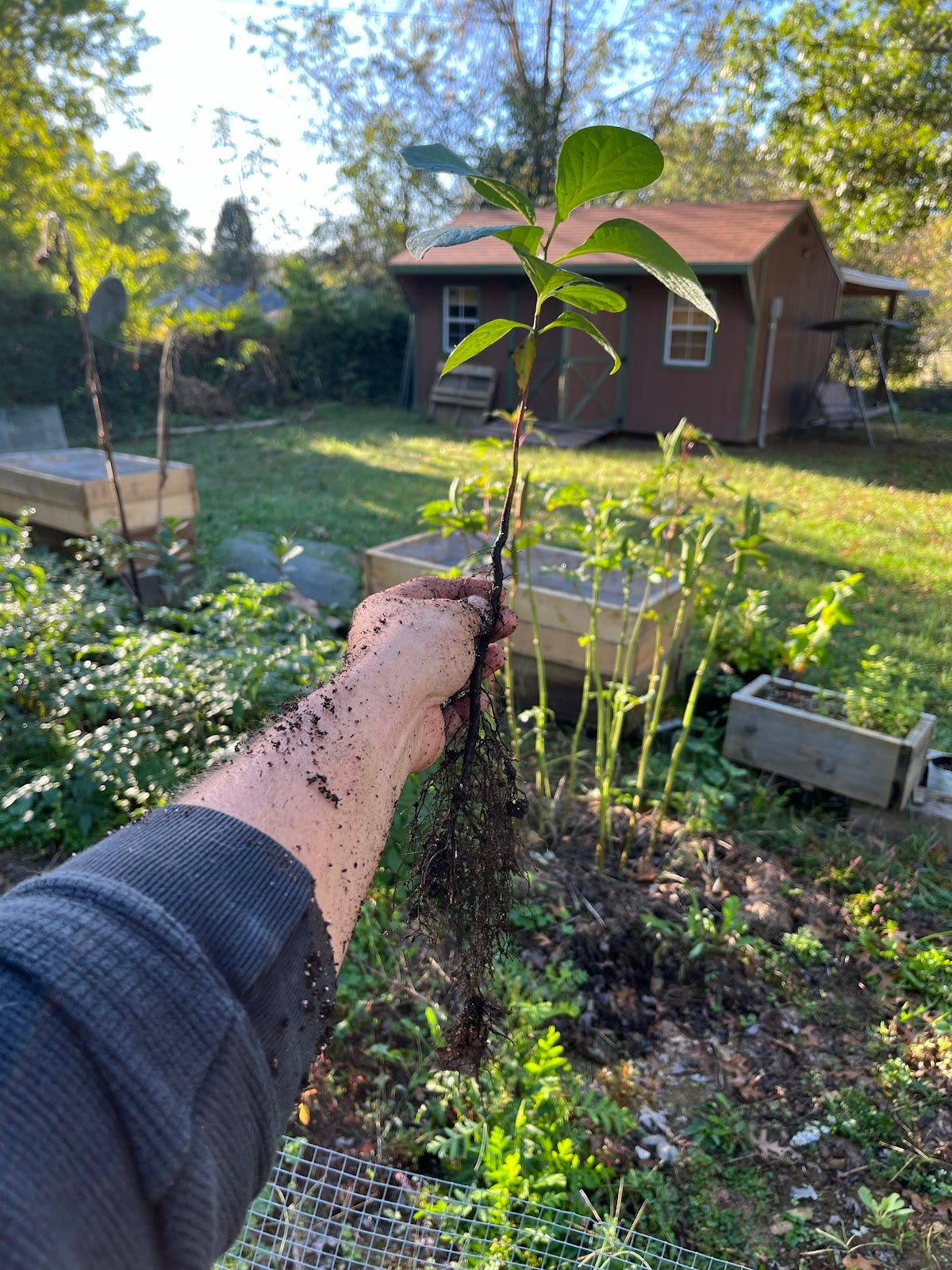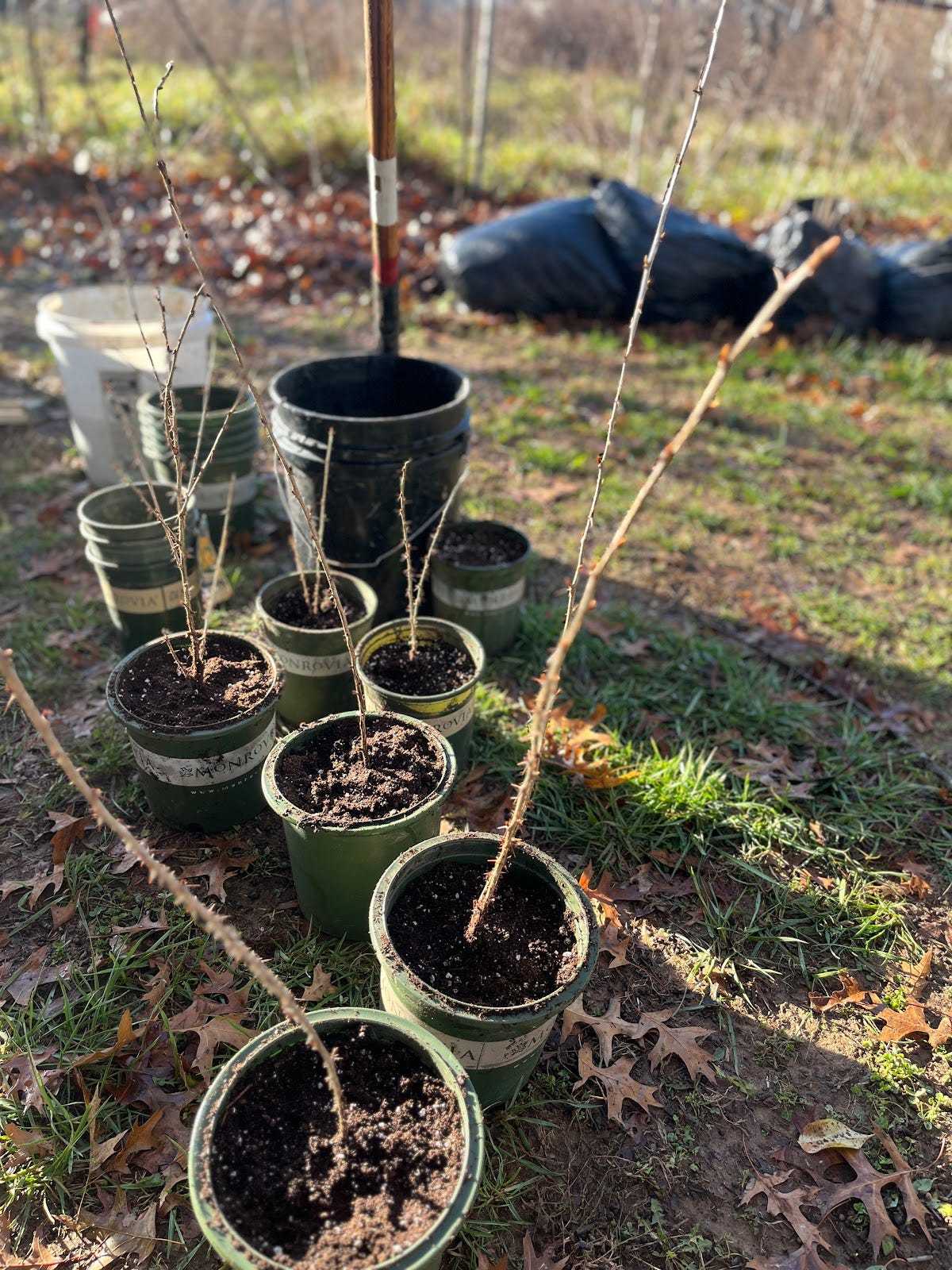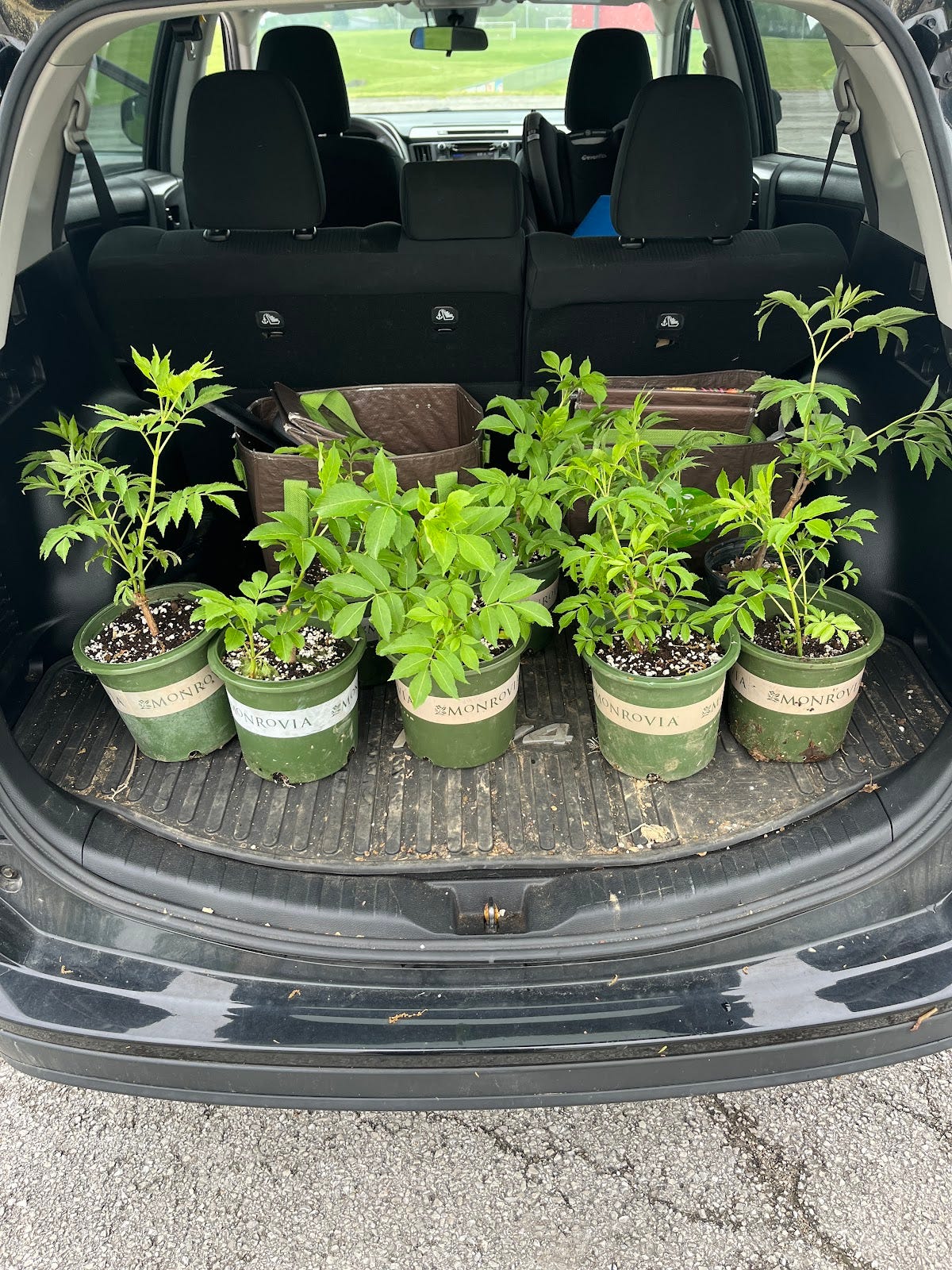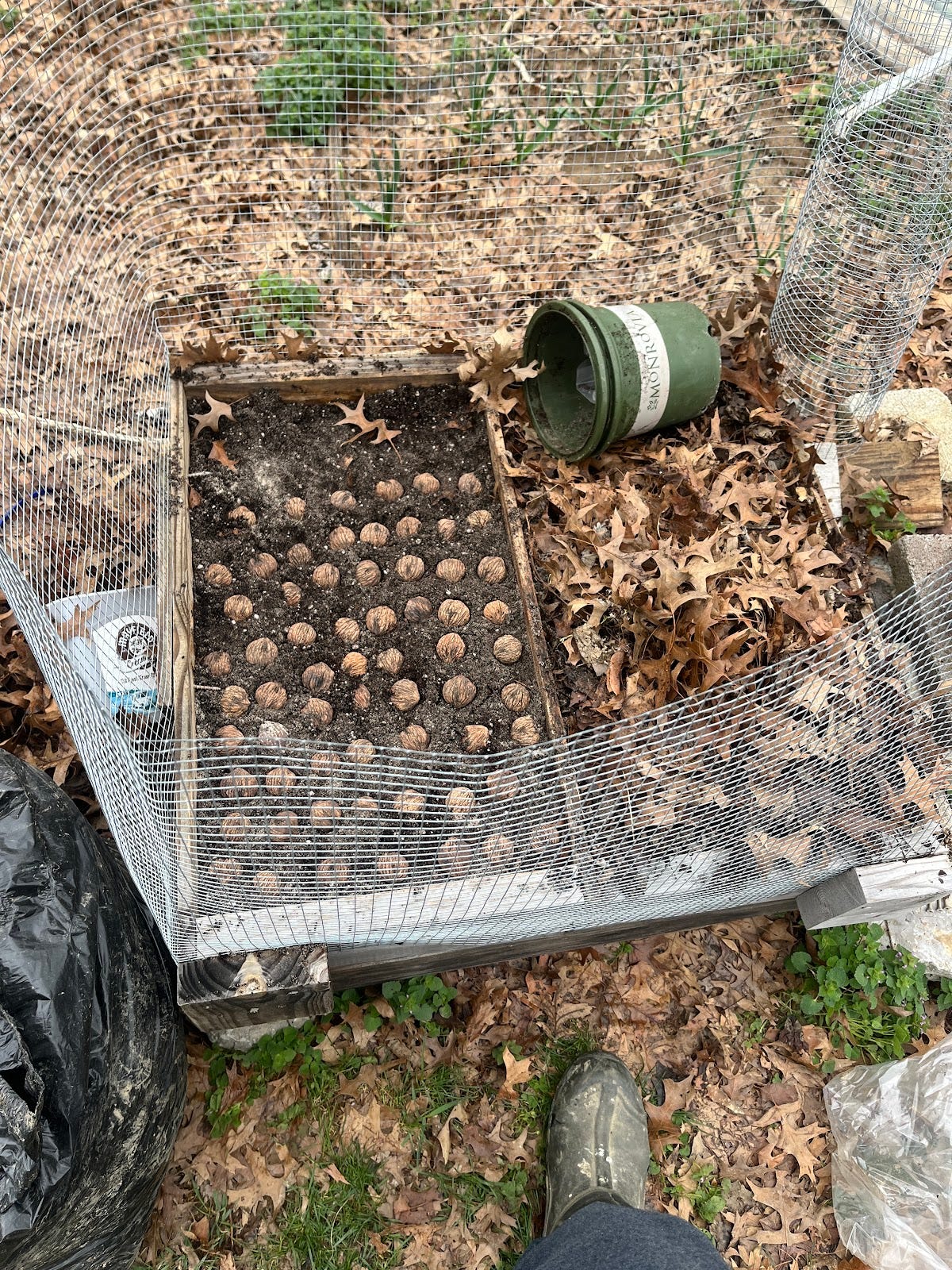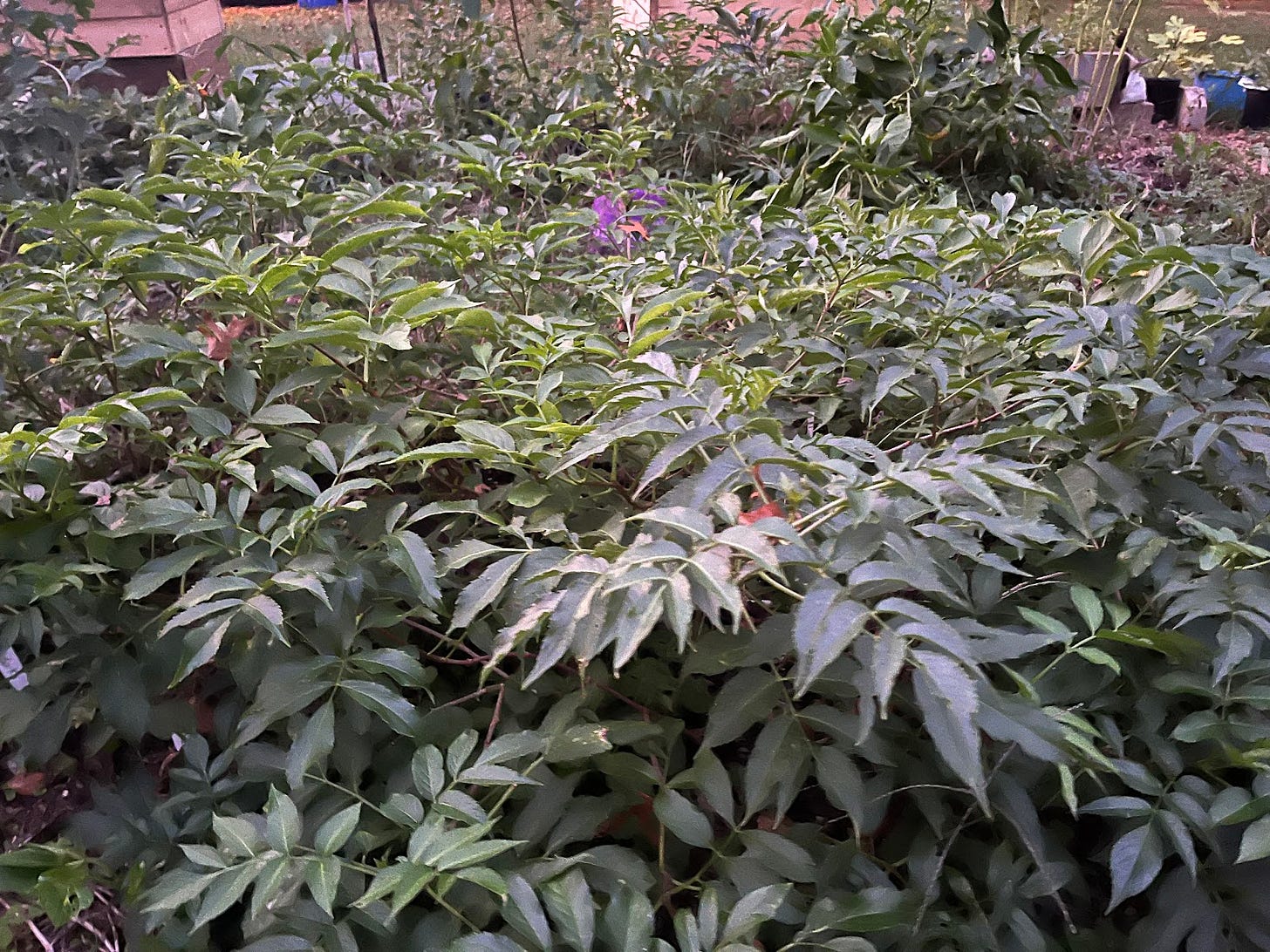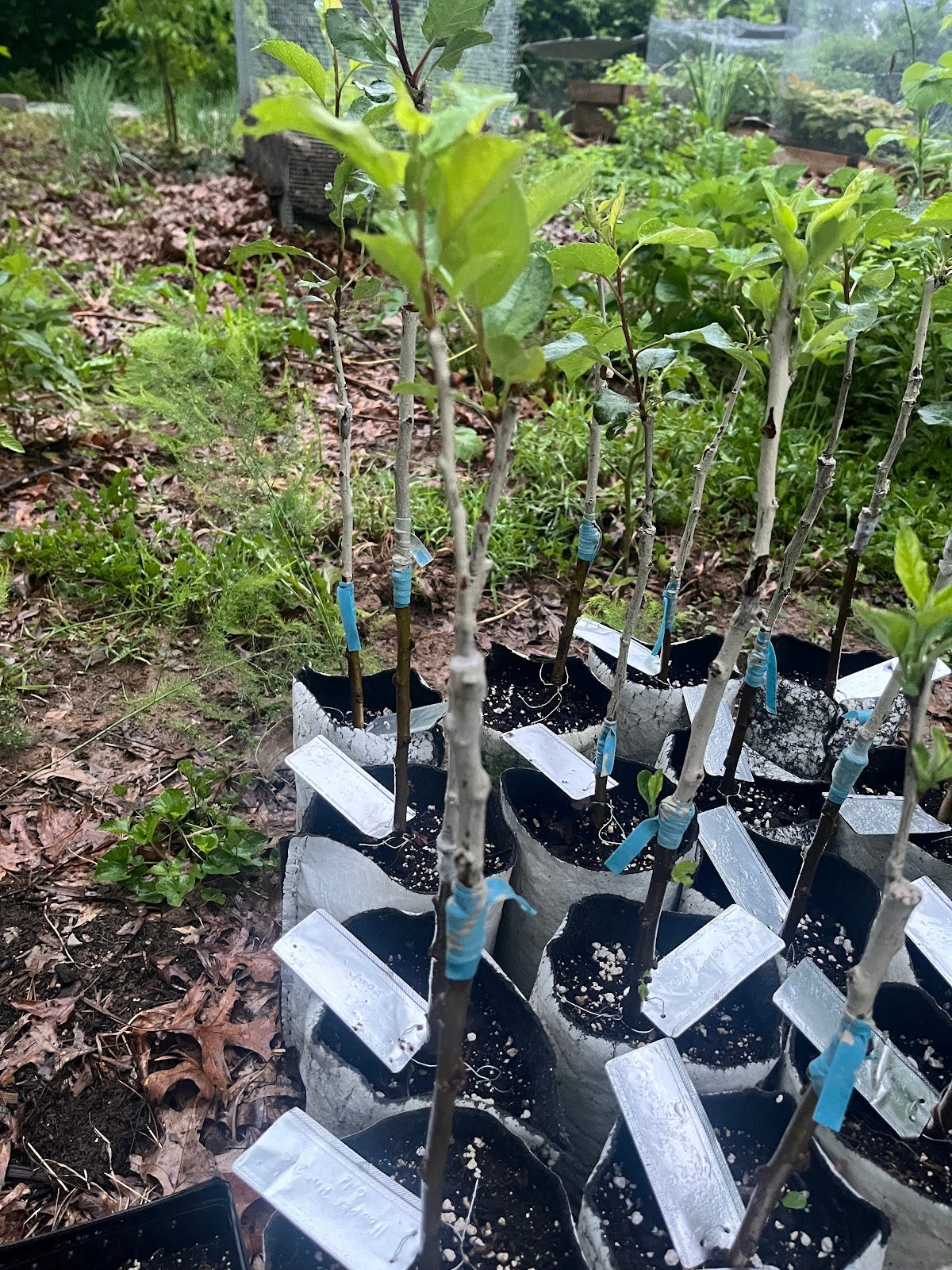“If you truly love nature, you will find beauty everywhere”
- Vincent van Gogh
“To plant a garden is to believe in tomorrow.”
- Audrey Hepburn
When you visit a nursery, the rows of neatly arranged trees and shrubs are the product of careful cultivation and management. But what goes into growing these plants?
Whether it’s a bareroot tree ready to be planted in your backyard or a potted shrub to brighten up your landscape, the behind-the-scenes nursery practices can vary widely.
In this issue, we take a closer look at how bareroot and potted plants are grown, propagated, and prepared for sale, and the methods I use to make sure each plant is ready for a successful future in its final location.
🌿 Air-Prune Beds: Shaping Root Health for Transplant Success
Another tool in the toolbelt is the air-prune bed, which helps shape healthy, well-formed roots for both bareroot and potted plants.
These beds are designed with special mesh bottoms that allow air to circulate around the roots, preventing them from becoming pot-bound or tangled. The air-pruning process encourages the roots to form a dense, fibrous network, which is ideal for transplanting. This system allows the plants to establish themselves quickly and reduces transplant shock.
🌳 Growing in Ground Beds: A Natural Foundation for Bareroot Trees
At the heart of the nursery, bareroot trees begin their journey in well-maintained in-ground beds. These beds are rich in living soil, giving the trees access to nutrients, water, and air—the natural conditions they’ll thrive in once planted out in the world.
For the trees destined to be sold bareroot, I focus on developing strong, healthy root systems in these beds. By allowing the roots to grow deeply and freely, I ensure they are naturally resilient and ready to survive the transplanting process.
Whether it’s persimmon, pawpaw, or redbud, these trees spend their formative years in the ground, developing robust taproots that help them establish quickly when planted out.
🪴 Potted Plant Culture: The Balance Between Convenience and Care
For some trees and shrubs that don't sell as bareroot, I transfer them into 14” or 16” tree pots, especially for tap-rooted species like pawpaw, persimmon, and oak. These larger containers give the roots room to expand, allowing the plants to continue growing until they're ready for their new homes.
For smaller shrubs like aronia, gooseberry, and elderberry, I use recycled 1-gallon to 3-gallon pots. These containers help retain moisture and protect the plants while they develop strong root systems. They also make it easier for customers to transport the plants home.
🌱 Propagation Methods: From Seed, Cuttings, and Grafting
At the nursery, propagation is one of the most exciting parts of the process. I use a mix of techniques to grow a variety of plants, each with its own benefits and challenges.
Seed-Grown Trees: For trees like persimmon and pawpaw, I start from seed. There’s something magical about growing trees from seed—the slight genetic variation between each plant makes it a surprise every time. It’s always a joy to watch the different ways each tree grows, and I find that seed-grown trees tend to be hardy and adaptable to their environment.
Cuttings for Shrubs: Shrubs like elderberry, currant, and gooseberry are propagated from cuttings. This method is straightforward, and it allows me to clone plants that have desirable traits, like good fruit production or strong disease resistance. The cuttings root in moist, nutrient-rich conditions, and once they have developed a strong root system, they’re ready to be sold.
Stool Layering: Another technique I use is stool layering for certain shrubs and trees. This involves burying a portion of the plant’s stem or branch in the soil to encourage it to root. Over time, new plants are created from the parent, allowing for the production of multiple plants from a single source. Think of it like hilling a potato.
Grafting: A Learning Process: While I don’t yet graft extensively for sale, I do experiment with grafting—especially with apple and pear trees. These easier grafts have given me the chance to learn the technique and gain experience. As part of an ongoing apple breeding project, I’ve grafted trees for my own use, but I’m looking forward to expanding my grafting skills in the future to offer more diverse options for customers. Grafting is a delicate art, and while my grafts are still a work in progress, it’s a rewarding learning process.
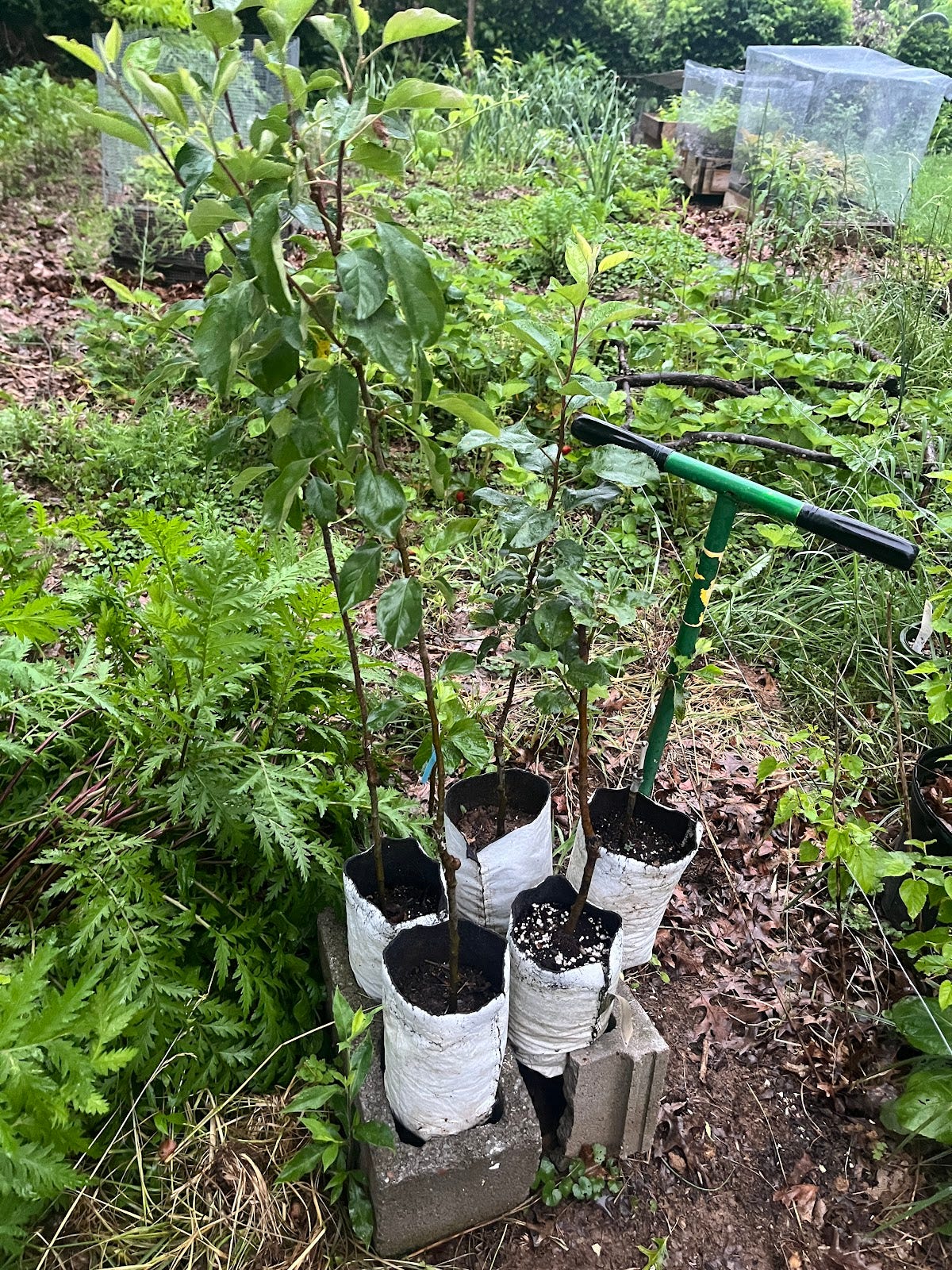
🌳 The End Result: A Mixture of Methods for a Diverse Plant Collection
What’s the end result of all these different methods? A nursery full of healthy, resilient plants, each grown with care and attention to their specific needs. Whether they’re bareroot trees with strong taproots, potted shrubs with established root systems, or carefully grafted fruit trees, each plant has been shaped by the method that best suits its growth and the environment it will thrive in.
At the nursery, I aim to balance convenience with sustainability, and quality with affordability. Whether you’re shopping for bareroot trees or potted shrubs, you can rest assured that each plant has been cultivated with the best practices to ensure a successful start in your landscape.
🌍 The Takeaway
Behind every tree and shrub at the nursery is a growing process, full of different techniques designed to create the healthiest, most resilient plants possible. From seed-grown trees to propagated cuttings and carefully nurtured grafts, the methods we use make a huge difference in the success of your plants. The goal is always the same: to grow plants that will thrive in your garden or landscape for years to come.
Next time you stop by the nursery, take a moment to consider the work that went into growing these plants. After all, it's not just about what you see above ground—it's the root systems and the care behind them that make all the difference.
Community Corner
This section is all about you — your insights, feedback, and ideas. I love featuring your past comments and learning what’s resonating most. Your input plays a big part in shaping the future of this newsletter.
Looking ahead, I have three topic ideas in the works — and I’d love to know which one excites you most! Let me know what you'd like to see next.
Let me know which one you’d like to read next by casting your vote and/or leaving a comment—I always enjoy hearing your thoughts!
Thank you for being part of this journey with me— exploring edible plants, sustainable practices, and the simple joy of nurturing local flora.
I can’t wait to hear your thoughts and ideas. I’ll see you back here next week!
Until then — happy planting,
Much love
Many blessings
Travis
P.S.
If you’re enjoying the newsletter and want to support its growth, I’d be truly grateful if you shared it with a friend, neighbor, or follower who might find it valuable.
Word of mouth is how this community grows — your recommendation could inspire someone else to start growing food and making a difference right where they are.

